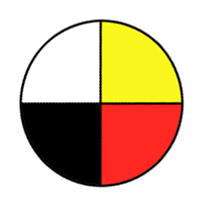Demonstrate understanding of non-standard units for linear measurement by:
- describing the choice and appropriate use of non-standard units
- estimating
- measuring
- comparing and analyzing measurements.
[C, CN, ME, R, V]
| (a) |
Defend the choice of a non-standard unit for measuring a length in a situation relevant to one's self, family, or community. |
| (b) |
Estimate a personally relevant length, including the distance around a space, using one's own choice of standard unit. |
| (c) |
Compare estimates of the same length made by different units and provide reasons for different values being stated for the measurements. |
| (d) |
Critique the statement "It is possible to get an exact length measurement". |
| (e) |
Devise and apply strategies for determining estimates for linear and non-linear lengths using non-standard units. |
| (f) |
Explain why overlapping or leaving gaps does not result in accurate measurements. |
| (g) |
Explain why the same non-standard unit should be used to determine length measurements that are to be compared. |
| (h) |
Compare and order sets of related objects, possibly including people, according to a length measurement. |















